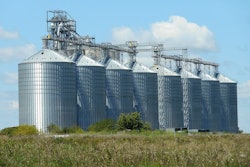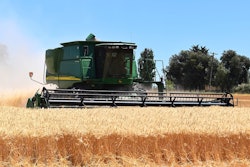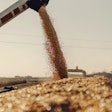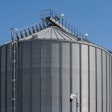
Some costs in business are unavoidable. Production Agriculture is no different. For many producers, it seems like everyone is trying to take a piece from them at every turn while they’re taking all the risk and feeding the world. They try and cut costs where they can and be as efficient as possible, but there’s a lot that goes into producing grain: land, seed, fertilizer, chemical, fuel, equipment and labor, and more. No matter the year or the circumstances, the grower must pay those bills and many others.
Then, of course, there are the years where the price is too low or production is not enough to cover all those costs. This is where the unavoidable and avoidable costs diverge. In these years, producers look for ways to make up the difference. These methods can add costs, risks or both to an already difficult marketing year.
All these post-harvest costs and risks are completely avoidable even in down years with a good grain marketing plan. Let’s discuss some post-harvest marketing pitfalls and why your growers should avoid them.
Storage/price later
If a farmer still has not sold by the time harvest arrives and prices are low, holding onto and storing the grain is a big temptation. It’s only a few cents a month or maybe a small dump fee plus a few cents a month.
But growers must ask themselves: “In a year where I am already struggling to break even, do I need to add more costs and move my breakeven further away?” Then there is the very legitimate possibility that they pay all of those fees and still take a lower price when they do end up selling.
Buying options
To combat the risk of falling prices, some producers are tempted to buy an option to establish a floor or minimum price for their grain. While this is a good method to protect them from the downside price risk, it can be costly. This, of course, moves their goalposts further away on having a profitable year. Remind them that they will have to forego the first part of any rally that does happen to recover their premium cost for the option. And that first part of the rally could be the only part of the rally.
HTAs and basis contracts
HTA (AKA futures only) contracts and basis contracts commonly have upfront charges, but sometimes they may not. Both often end up charging roll fees, however, the longer the grower waits to price. The problem with these contracts for growers is that it takes their already difficult selling decision and gives them two selling decisions. Each day, the cash price available occurs as a result of the combination of the futures price and local basis. When they separate these two, the farmer is trying to adjoin two completely unrelated markets to create the selling price. While it’s possible to hit a home run with this, it’s equally possible to create a worse price than anyone could have sold all year. There are enough unpredictable things about marketing without creating a new one. Of course, paying extra fees on top makes it hurt even worse.
Fancy contracts
在这些年来的较低的价格,公司获得更多的and more hard-pressed to buy grain and they try to come up with new and creative ways to do so. Thus, many complicated and confusing contracts come about where growers commit to possibly selling a certain number of bushels at an unknown price. Sometimes bushels are known, sometimes they can range from no bushels to double what the grower contracted. Sometimes they have a range of prices that will be sold, sometimes not. It’s in these low price years that you will see old contracts that have fallen out of favor due to poor outcomes come back with a new name, but the same old scheme. Many times, there are upfront fees charged, but sometimes the fees are hidden within the unknown price that they will be receiving.
Other times, there is a premium above the market on some bushels. When you accept a premium, you also are accepting extra risk. These may not be risks the grower is comfortable having on top of all the risks already involved in their business.
Avoiding costs and risks
Of course, the simple answer for your customers to avoid these added costs and risks is just to make sure they sell all they can at profitable levels before harvest and sell the rest at harvest. This is much easier said than done, and many growers would say it is not realistic. So what is realistic?
Work with growers to come up with a marketing deadline. A concrete marketing deadline is a shift in how many farmers think about their farm marketing season. Many think that they have until the next harvest starts to sell their grain. Some have a deadline of the planting season.
Elite marketers, however, look at harvest as their deadline. Whatever is not sold on forward contracts gets sold across the scales. This even applies to those with their own grain storage. They can sell for forward delivery months at harvest and pick up market carries that pay a premium for their investment in the grain storage. Using grain bins as a way to delay marketing with less cost is only operating on-site grain bins as a crutch for a growers’ indecisiveness. Using them in this way when the prices fall makes the bins cost the farmer even more money. On-site grain storage should be working for them, allowing the producer to sell forward deliveries where they are picking up carries above the spot market.
Do those elite marketers who try to be completely sold by harvest always get it 100% done? Not always, but that mindset pushes them to smarter decisions that avoid many costs and risks that are unnecessary to their business. They not only avoid the post-harvest costs but also a lot of the added stress from delayed decision making and do not find themselves wrapped up in complex contracts with a lot of unknowns.
As Ronald Reagan once said, “They say the world has become too complex for simple answers. They are wrong." ■
Jason Wheeler joined White Commercial Corp. in June 2005 to advise grain elevators across the country regarding their merchandising and risk management strategies. He is a graduate of the University of Arkansas with a degree in Agricultural Business and has also taught many workshops all over the country to farmers, grain elevator staffs and lenders.





















